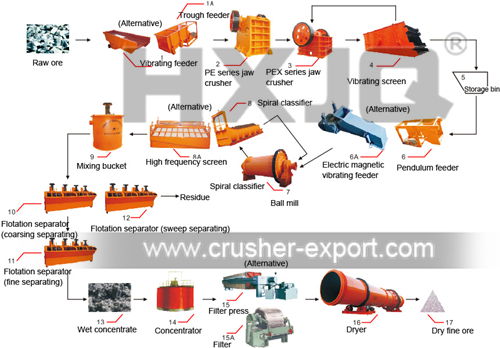

In the entire ore beneficiation process in the dressing plant, the crushing and grinding operation can provide the materials for the subsequent sorting operations, which requires that it should comply with the strict requirements of operation. The useful minerals in the ore (mineral to be recycled) and gangue minerals (materials to be abandoned) are closely embedded with each other. To separate the useful minerals from the gangue minerals and conduct the separation between the useful minerals are the prerequisite of the beneficiation, which is also the primary task of grinding. The grinding before the ore beneficiation belongs to the dissociative grinding in nature. If the full dissociation of useful minerals can not be realized, there would be no high recoveries and concentrate grade. It is not easy to recycle when the useful minerals and gangue minerals are in the cenobium state. Even if it is recovered, the grade will be low. Therefore, the beneficiation of the primary requirement that the beneficiation brings to the grinding is that grinding minerals have high monomer dissociation degree, which is also the primary standard to distinguish the grinding product quality .

Various beneficiation methods are subject to granularity limitations and they have certain suitable granularity . The too coarse or too small grain size is difficult to recycle. Therefore, to provide the raw materials of suitable granularity for sorting is the second task of grinding. In addition, the attention should be paid to the following problems. In the beneficiation process, if the grinding product is too coarse, it can have the opportunity to be grinded again (if it is a closed-circuit grinding ore or two paragraphs grinding)., but the over-grinding products can not be recycled. Thus, the operators should minimize the over-grinding products in the grinding process.
